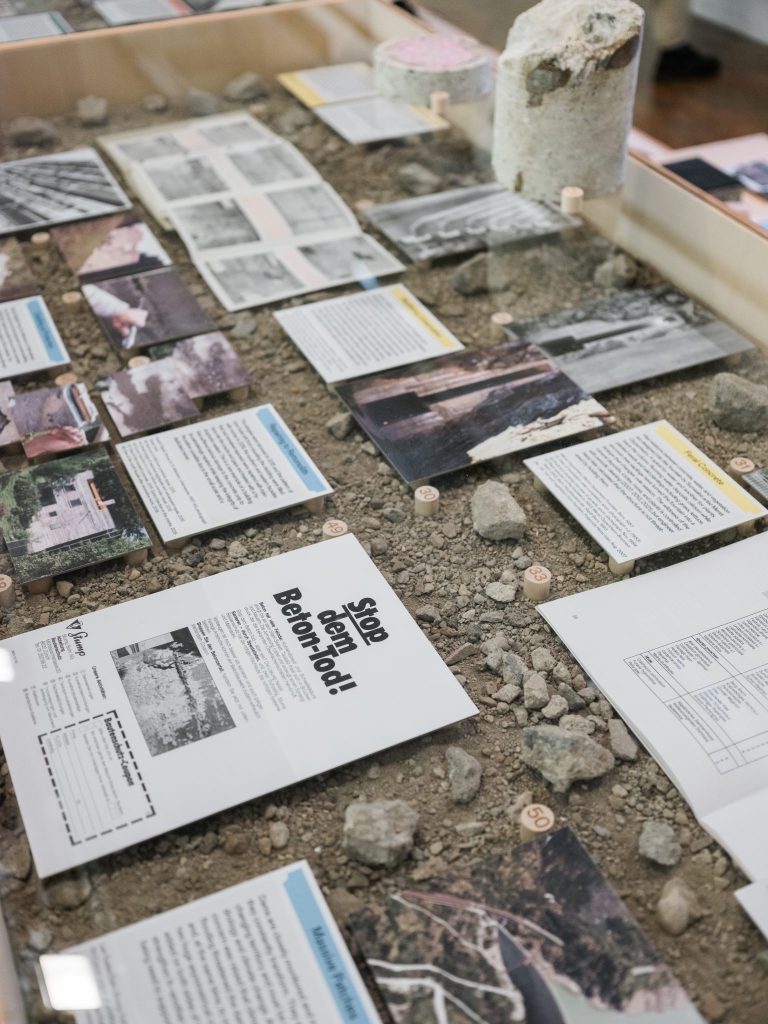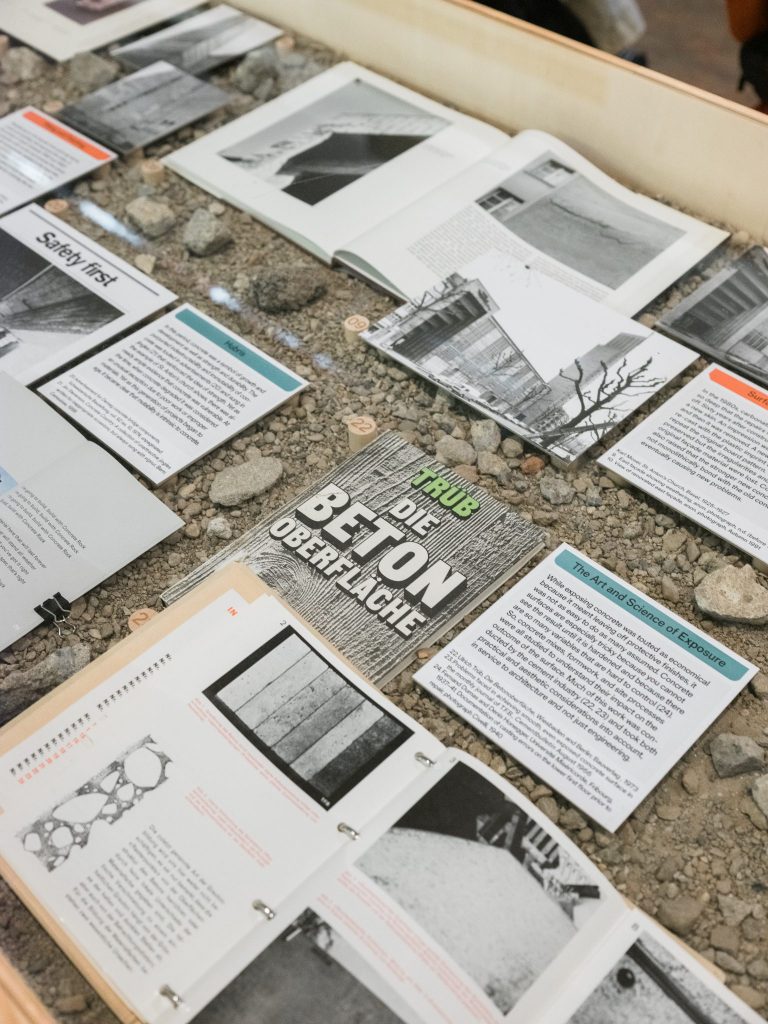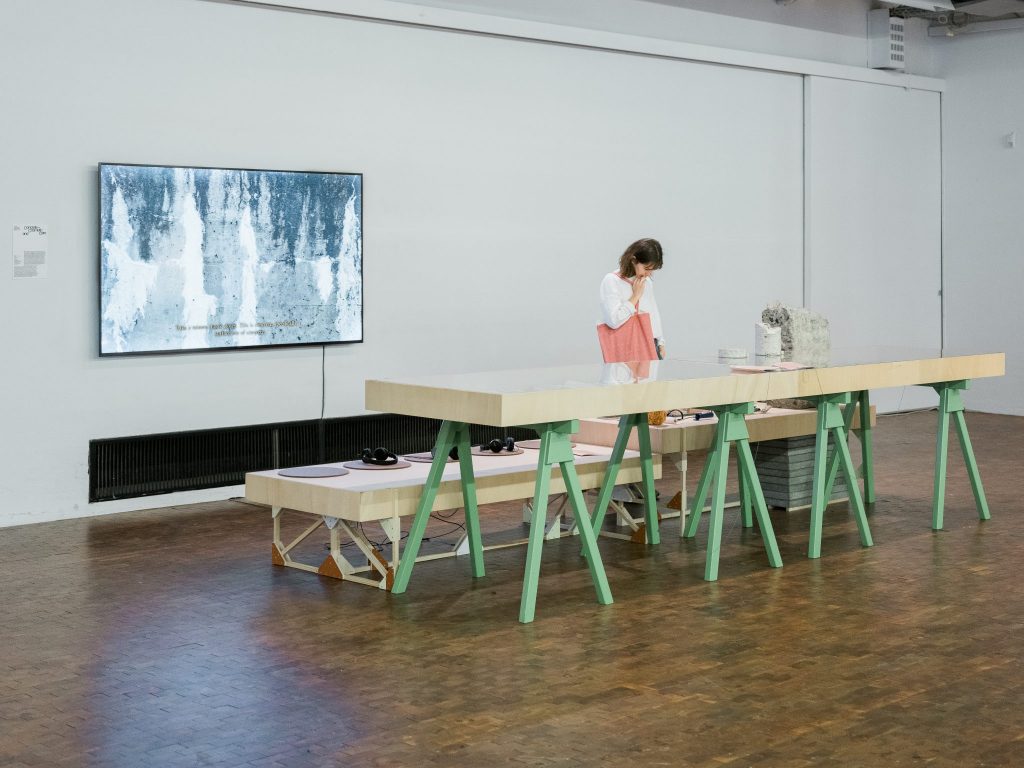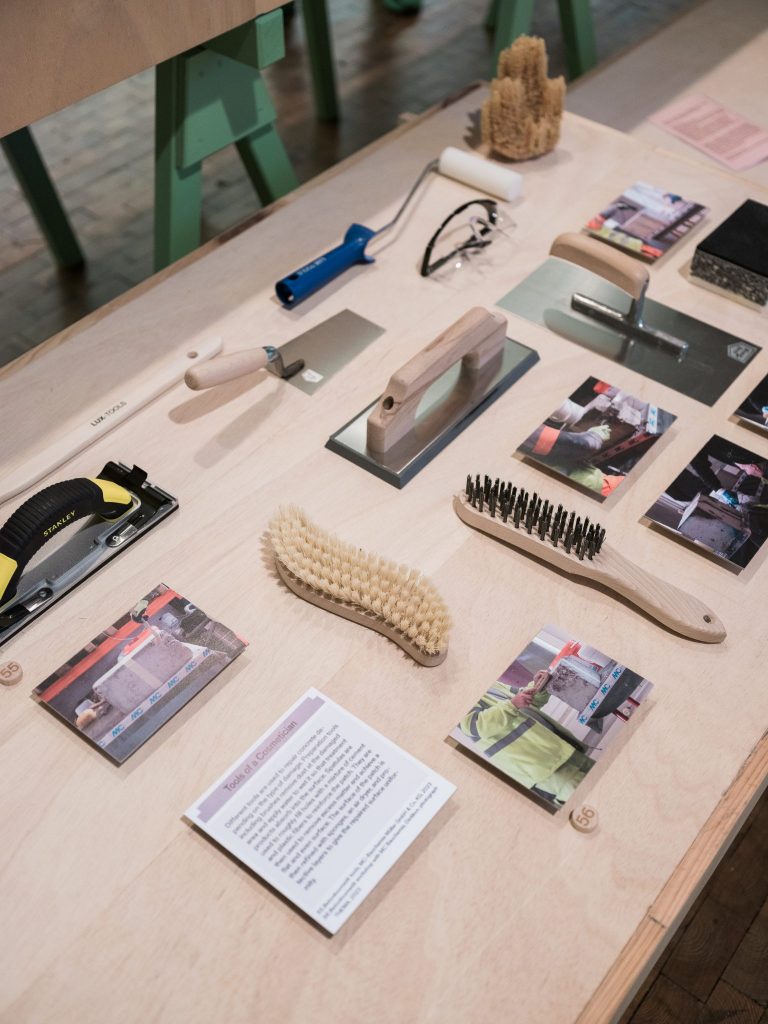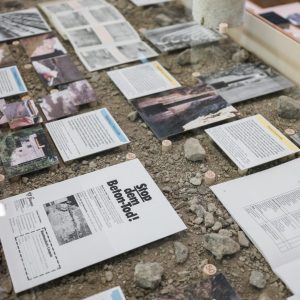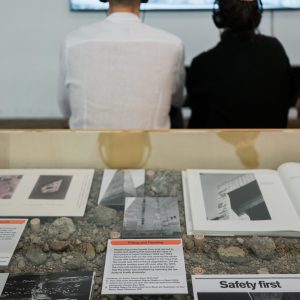‘Concrete: Cosmetic and Care’ focuses on a heavy heritage: the mass of mainly post-war structures in reinforced concrete. It is THEMA contribution to The Great Repair exhibition. The post-war building boom covered the globe with an unprecedented amount of concrete. Production of every ton of cement alone releases 600 kg of carbon dioxide making the construction industry a substantial emitter of greenhouse gases. Much work in the post-war era focuses on the preservation challenges for iconic brutalist structures. Here instead, the aim is to strategize the maintenance and repair of reinforced concrete as ubiquitous, unspectacular, and unloved and raise awareness around concrete care and repair.
In the context of today’s climate crisis, we need to rethink the necessity and materiality of new construction while there already exists a huge stock of buildings. How do we learn to live with this inherited mass and how do we maintain it? What is the role of repair in relation to a material that we have no affinity for and which in many cases engenders open animosity?
Many of these structures suffer from degradation, particularly when exposed (cracking, spalling, streaking, etc). We would like to argue that this is the result of a particular mindset, one that believed concrete to be both under control and immutable, despite ample recurring evidence to the contrary. To untangle this, we will look at the construction of the idea of control and immutability through advertising and material science. A film documenting concrete practices like ‘Betonkosmetik‘ will illustrate the degradation and possibilities of repair of this material, along with physical concrete samples, and tools of repair. Through archival documents, we will show that there have been continuous attempts at concrete repair over the past decades, demystifying the myth of its immutability. We will finally focus on the fragile hardness of the concrete surface, looking at how and how it is vulnerable, why it is an important site of care, and what possible practices might take better account of its vulnerability.
